Updated December 23, 2023
For most of us, learning how to pack light, or lighter, is an evolutionary process. Getting it right takes experimentation, practice, and refinement. To help you on your journey, here are my top 20 tips on how to pack light.
Table of Contents
- Top 20 tips on how to pack light
- 1. One size doesn’t fit all
- 2. Benefits keep us on track
- 3. Develop a minimalist mindset and strategy
- 4. Factor the environment into your packing style
- 5. Choose luggage carefully
- 6. Leave room in your bag (20%)
- 7. Lists help, a lot
- 8. Size matters (think compact) and become a weight watcher
- 9. Think double-duty and multipurpose
- 10. Minimize toiletries
- 11. Plan to do laundry
- 12. Identify your clothing principles
- 13. Limit shoes
- 14. One week = one month = one year
- 15. Find your packing style
- 16. Evaluate gadgets
- 17. Pack with your safety and security in mind
- 18. Go paperless
- 19. Be inventive
- 20. Pack as early as possible
- Conclusion
Top 20 tips on how to pack light
1. One size doesn’t fit all
Packing light means different things to different people at different times to different destinations. What works for one traveller may not work for another. While some ultralight packers travel for weeks or months with a small 20-litre backpack, most light packers aim to stay within an airline’s carry-on allowance. Others need to travel with checked luggage for a variety of reasons and circumstances, while remaining committed to packing lighter.
Incorporate other travellers’ suggestions only if they’re a good fit. That includes what you’ll find in these tips on how to pack and travel light. Make your own decisions on whether or not to pack jeans or convertible trousers, or rolling is better than folding. Just because a universal sink plug, travel towel, headlamp, or duct tape are listed as indispensable items on seasoned travellers’ packing lists, they don’t have to be on yours.
In other words, identify your own definition and description of packing light, set goals for each trip, and pack according to your preferences, needs, and travel style.
2. Benefits keep us on track
Of all the reasons to pack light, which ones motivate you the most? What benefits will most likely keep you on track? Is it saving money by taking a budget carrier with hefty baggage fees and an 8-kg (18-lb) carry-on limit? Perhaps it’s the ability to walk or use public transportation to get to where you’re going. Maybe it’s never losing sight of your bag and always having it arrive with you at your destination. Or, could it be that liberating feeling of being able to change plans on a whim unencumbered by ‘stuff?’
As one Facebook user said,
Once you’ve had to lug a heavy suitcase up many stairs in buildings and stations without elevators, over cobblestoned streets, and up and down steep, narrow steps on a train during a two-minute stop, you realize you don’t need 90% of the things you bring on a trip.
Nobody cares or notices if you wear the same clothes day after day. I’ve always had to carry, lift, and look after my stuff, so through trial and error, I’ve become better at packing. However, there’s room for improvement. One day, I’ll be able to travel for three months and not take anything superfluous, or clothes that I don’t wear at least a dozen times.
Keeping benefits in mind might be just the inspiration that’s needed to eliminate that extra kilogram (or more) from your bag.
3. Develop a minimalist mindset and strategy
How do so many travellers manage with carry-on? While there’s no right way or wrong way to pack light, the secret lies in identifying the essentials — the absolute minimum, and building from there. What are your must-haves, and what can you temporarily do without? Can you forego a hairdryer and curling iron, and pare down your range of hair care products? What are your other toiletry kit essentials? If you’re not ready to go makeup free, what are your must-haves, and what’s available in travel sizes? What does your minimalist wardrobe look like, and how can you stretch it to create as many different looks as possible? What’s in your basic first-aid/health kit? Which gadgets are non-negotiable, and which ones can you do without?
Another approach is to work backwards. This involves laying everything out and evaluating each item. Everything must earn its place. There’s no room for ‘just-in-case’ items (except first-aid supplies) or anything that will be worn or used just once. Dig into each kit and remove pieces of jewellery, makeup, first-aid supplies, toiletries, clothing, and ‘stuff.’ Eliminate any item of orphan clothing that doesn’t go with several other pieces. When flying on a budget airline with a 7-kg (15-lb) carry-on allowance, I was able to use this process to purge an additional .9 kg (2 lb) of stuff that I didn’t end up missing. It consisted mostly of small items that collectively and surprisingly weighed quite a bit.
Or, picture yourself with lots of luggage and how you’ll manage. On a trip to Australia, I was surprised to see so many travellers struggling with baggage. After hoisting a huge backpack from the luggage compartment of a bus, the passenger stumbled and fell backwards from the weight of her pack. In hostels, I stepped over duffel bags and packs that were too large to secure in the lockers provided. I observed travellers wheeling huge rolling bags over uneven pavement while juggling other bags.
Travelling like that can’t be enjoyable.
4. Factor the environment into your packing style
Hikers who trek in and out of wilderness areas without leaving any trace of their presence pack with purpose and precision. We can learn a lot from the ‘leave-no-trace’ movement.
- There are travellers who pack old clothing to be discarded before returning home. Why not recycle or repurpose these items at home where you’re familiar with environmentally friendly disposal systems?
- Is ‘If I need something, I’ll buy it there’ a dominant feature of your packing style? If so, how can you reduce your environmental footprint when it’s time to move on? If it’s not something you want to take with you, resist the temptation to toss it in the garbage; chances are you’ll find an appreciative local or another traveller to make use of it.
Does ‘pack in and pack out’ make more sense? Here are some examples.
- You could easily purchase an umbrella from sellers who materialize at the first sign of rain. But, it’ll likely be of a quality, size, and weight you won’t want to pack when you leave. Why not invest in a small lightweight travel umbrella that can be used time and time again?
- Cheap flip-flops are available worldwide, but chances are they won’t last. Why not invest in a quality pair of Havaianas Slim, and use them as shower shoes, hotel slippers, or beachwear throughout your travels? They’ll last you for years. Mine have.
- Plastic shopping bags carry purchases, but they’re hard on the environment. Why not pack a pocket shopping bag? In fact, the ChicoBag Vita rePRTe is made of recycled materials, can carry up to 40 lb (18 kg) and weighs just 2 oz (56 g).
- If you’re a tea or coffee lover, pack a reusable cup. The Stojo 12-oz cup is collapsible and spill proof, and weighs 150 g ( 5.3 oz).
- When faced with no garbage cans (or overflowing ones), it’s handy to have a small dry bag to carry your rubbish. Dry bags have so many uses that they’re considered an essential item by many travellers.
- If you regularly enjoy street food and take-out, pack a lightweight spork and skip the plastic cutlery. Another option is a wallet-sized flatware set.
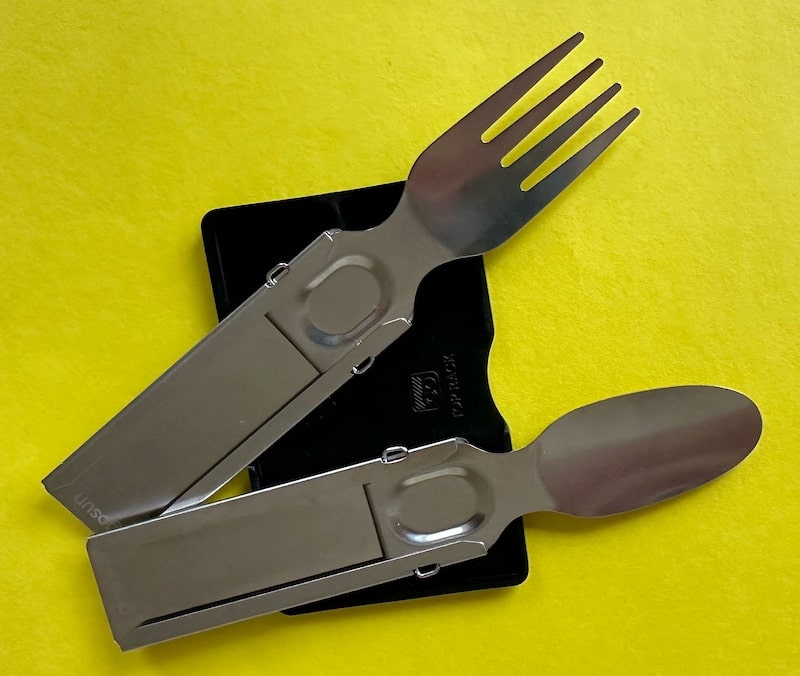
Look for products that are safer for you and the environment.
- Some hostels supply towels, sometimes for an extra fee. I’ve stayed in hostels where towels weren’t available at all. My Pangea travel towel is more effective and more sustainable than a microfibre product. It’s made of bamboo, is biodegradable, lightweight, fast drying, and weighs 80 g (2.8 oz).
- Many panty liners and wet wipes have excess packaging and contain plastics and harmful chemicals. There are better alternatives such as natracare panty liners made of organic cotton. Choose sanitizing wipes containing organic alcohol that are biodegradable. Or pick up washable panty liners, wipes, and other reusable products from the online marketplace, Etsy.
By packing lighter, you’re contributing to reduced emissions when flying. In addition, you’re able to walk with your luggage, use public transportation, and share smaller vehicles with others. Look for other ways to consider the health of our planet in the ways you pack and travel.
5. Choose luggage carefully
It pays to get this one right. Experimenting with luggage is expensive. Been there, done that. Unless you’re an ultralight minimalist and dedicated ONE bagger, two or even three bags (think main bag, day bag, packable purse) might best suit your travel style.
An important consideration is how you’ll handle your luggage and remain mobile. Picture how to comfortably manage everything at once. If you’re travelling solo, there will be no one to watch your bags while you visit the washroom so you’ll need to take your luggage into the cubicle with you.
- Do you prefer the hands-free carry-on model? If so, a convertible backpack and crossbody bag might be a complementary combination.
- Or choose a two-in-one backpack similar to the Osprey Farpoint 55 or Osprey Fairview 55 with a smaller, detachable 15-litre backpack attached. These weigh 1.92 kg / 4.23 lb and 1.89 kg / 4.16 lb respectively.
- If you prefer rolling luggage, a personal item might need a luggage sleeve to slide over the telescopic handles of your rolling bag.
- Another option is to choose rolling luggage and a backpack in the same bag. My Osprey Daylite Carry-On Wheeled 40 L Duffel has removable, packable backpack straps, and empty, the bag weighs 2.24 kg / 5 lb.
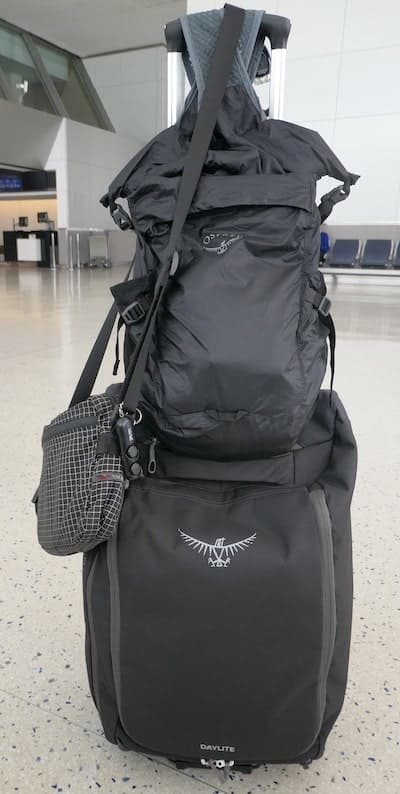 If the ‘nested’ approach appeals to you, you’ll need packable secondary bag(s) that can be packed inside your main bag when carrying one bag is preferable. The photo shows an example of the nested style. The crossbody Tom Bihn Side Kick (3 litres, 267 g / 9.4 oz) and the Osprey Ultralight Dry Stuff Pack (20 litres, 200 g / 7 oz) are packable bags capable of nesting inside the Osprey Daylite Carry-On Wheeled 40 L Duffel.
If the ‘nested’ approach appeals to you, you’ll need packable secondary bag(s) that can be packed inside your main bag when carrying one bag is preferable. The photo shows an example of the nested style. The crossbody Tom Bihn Side Kick (3 litres, 267 g / 9.4 oz) and the Osprey Ultralight Dry Stuff Pack (20 litres, 200 g / 7 oz) are packable bags capable of nesting inside the Osprey Daylite Carry-On Wheeled 40 L Duffel.
Standard bag
Rolling suitcase or convertible backpack? Soft-sided or hard-shell? Lots of internal organization? Desirable weight, both empty and packed? Warranty? Capacity?
For a carry-on bag, aim for a maximum capacity of 40 to 45 litres. A bag of this size is manageable, and will undoubtedly pass for carry-on for most airlines. A bag of this size will force you to adopt a range of packing light strategies, even if you’re travelling for several months across different climatic zones. Anything larger, and you’re bound to fill it (and probably have to send it as checked luggage). Before making any decisions, list all the features you need, and start researching.
Personal item
Making your personal item double as your day bag should result in less luggage. Many airlines have a two-bag carry-on allowance of one standard and one personal item, each with specific size and weight restrictions. The personal item needs to fit under the seat in front of you during takeoff and landing. Allowances for a personal item are usually generous enough that a personal carry-on could become your day bag at your destination. Choosing the type, size, and features of this item depends on several factors, including your activities and what your body prefers.
I suggest four steps to figure out what meets your needs.
(i) In-flight essentials
What will you need during the flight or a long bus ride or train trip? It’ll contain items you can’t afford to lose, as well as things you need for a safe, comfortable, and enjoyable journey.
(ii) Day bag essentials
What will you want to carry while exploring a destination? Phone? Refillable water bottle? Clothing for layering up or down? Rain gear? Camera? Basic first-aid kit? Comfort pack of self-care essentials? Flashlight? Guidebook?
(iii) Type of bag
The two previous steps will provide clues on size and capacity. Next, identify what type of bag is best suited to your daily activities and what feels most comfortable to carry. If you expect to walk several kilometres and carry it from early morning until evening, it has to be comfortable. If a larger cross-body bag or sling bag results in shoulder-and-neck stress, a small backpack might distribute the weight more evenly for you. If you like a crossbody purse and backpack in the same bag, there are convertible options such as the Pacsafe Citysafe CX Anti-Theft Convertible Backpack.
(iv) Desirable features
What features do you need? Internal and external zippered pockets? Front and back zippered pockets? Sternum and waist straps? Security features? Water bottle pocket? Packability?
Also, it might be helpful to identify ‘undesirable’ features. For me, open pockets, Velcro closures, and shoulder straps made of webbing come to mind.
Small purse
Do you need a small purse? There may be activities or venues when it’s handy to carry a few basic items, and a day bag doesn’t fit the bill. My handmade crossbody purse and Pacsafe Daysafe Anti-Theft Crossbody Bag are small enough to wear under clothing. Both have enough space for essentials such as a passport, phone, financial cards, and cash.
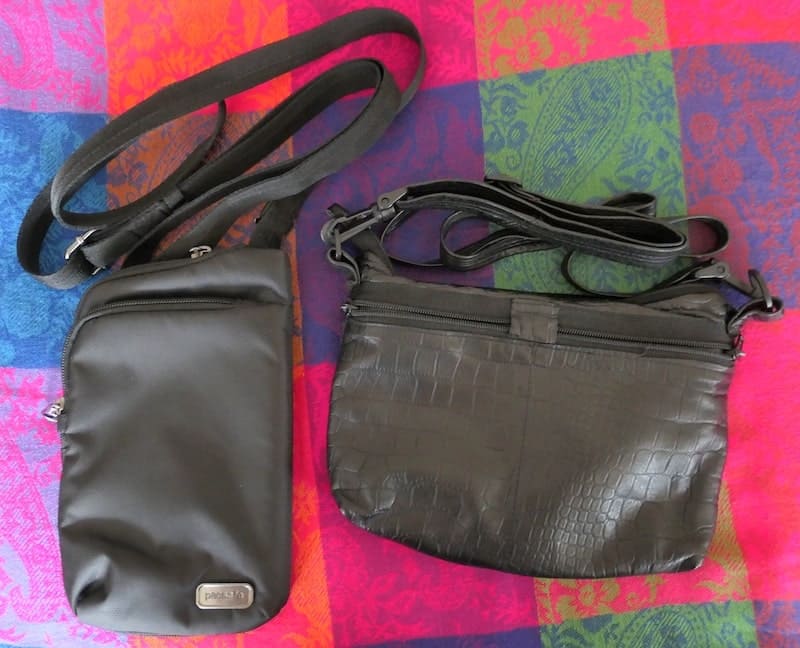
6. Leave room in your bag (20%)
It can be tempting to fill a bag of any size. By deliberately leaving room, it means:
- a soft-sided bag with dimensions exceeding the ’45-inch rule’ can be squished to fit carry-on requirements, or stuffed into luggage sizers and smaller overhead bins.
- you’ll have room for repacking a bag quickly if you’re strapped for time.
- there’s enough room to nest a packable personal item/day bag when carrying one bag is preferable.
- placing one bag only on the conveyor belt at security screening. With packable secondary bags safely stowed in your main bag, there’s less chance of theft if there are delays passing through the walk-through scanner or if you’ve been selected for secondary screening.
- there’s space for purchases collected along the way.
7. Lists help, a lot
I’m big on lists — in fact, three of them. One is a packing list, another is for shopping, and a pre-travel checklist contains tasks to accomplish before leaving home.
(i) Packing list
Organize your list in categories. Find ones that work for you. My current category titles are ‘Essentials’ (primarily, identity documents and finances), ‘Toiletries,’ ‘Comfort Pack,’ ‘Footwear, Clothing, and Accessories’ (divided into sub-categories), ‘Laundry,’ ‘Luggage, Packing Aids, and Accessories,’ ‘Gadgets,’ ‘Health/First-Aid,’ and ‘Miscellaneous.’ ‘Skiing,’ ‘Cycling,’ and ‘Camping’ are separate categories for additional items specific to those types of trips or activities.
I also include descriptive information about many items, such as brand names, models, and sizes. These are handy in the event of an insurance claim, or if someone asks for recommendations. They’ve been invaluable when ordering a replacement for a worn or lost item.
(ii) Shopping list
A notes app on a phone is handy for keeping a list of ‘Travel Purchases’ as a reminder to pick up items when out and about, and research products at your leisure.
When planning a visit to another city or country, consider an online search for the names and locations of travel and outdoor stores. Then, try to blend a shopping excursion as seamlessly as possible into other activities. This will provide you with inspiration and leads on new products, or those not available at home. I found some gems at Bever in Amsterdam, REI in New York, MEC in Toronto, and Kathmandu in Australia.
(iii) Pre-travel checklist
Create a list of all the tasks to be accomplished before leaving home, from the mundane to the essential. Be as detailed as possible, and include a timeline. Save an electronic version for the next trip.
8. Size matters (think compact) and become a weight watcher
Look for lightweight compact versions of everything on your packing list. When faced with two products of a similar quality, choose the lighter and more packable one. When purchasing online, always check the specifications for the dimensions and weight.
Here are a few other things to consider.
- For any bag, aim for an empty weight that doesn’t exceed 20% of your carry-on allowance. For example, if you typically travel on an airline with a 10-kg (22-lb) allowance, your bag should weigh no more than 2 kg (4.4 lb). Go lighter if you can, but not at the expense of quality and durability.
- A digital hand-held luggage scale takes the guesswork out of figuring out the weight of your packed bags. A combined kitchen/mailing scale can be very handy for comparing weights of individual items and making choices on what to pack.
- Avoid pre-assembled kits. Build your own first-aid, toiletries, and ‘MacGyver’ kits.
- Collect light, durable containers of various sizes and functions for your toiletries, and to use as packing organizers.
If you’re committed to carry-on travel, aim to purge every last gram or ounce of dead weight from your bag.
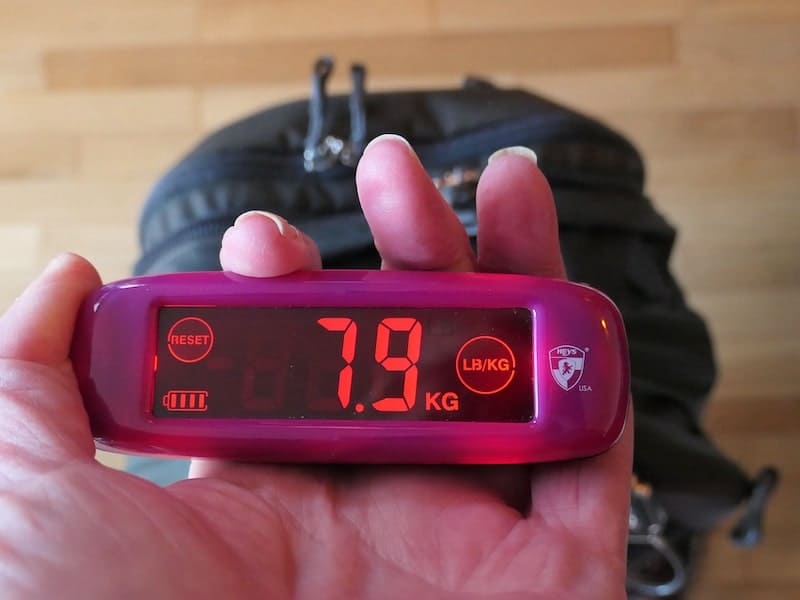
9. Think double-duty and multipurpose
When choosing what to pack or purchase, think about how many uses can be gleaned from each item. Here are some examples.
- Scarf or pashmina? Both accent a travel outfit, but which one can be used as a blanket, towel, privacy screen, tablecloth, makeshift bag, skirt, swimsuit cover-up, and so much more?
- The right leggings can double as pants, sleepwear, exercise gear, loungewear, or as a layer under trousers or a dress when the temperature drops. I like the five-pocket Lululemon Pace Rival Crop that have served me well for several years.
- A skort is more versatile than shorts, and the skirt could be dressed up to transition from day wear to smart-casual evening wear.
- Anti-pickpocket underwear with secret pockets can be worn as shorts, loungewear, or swimsuit bottoms.
- A tunic could create an outfit with leggings, or used as sleepwear or a swimsuit cover-up.
- The right long-sleeved button-up travel shirt with an adequate UPF (Ultraviolet Protection Factor) could be as effective for dressier occasions as it is for protection from the sun. My Columbia Silver Ridge is such a shirt.
- A waterproof, windproof outer shell is useful for day-to-day use, and a rain jacket in wet weather.
- A wallet phone case with a compartment is handy for storing a driver’s license, transit card, emergency contact card, and emergency money.
- Look for double-duty products with pockets to use as a ‘wallet.’ Need inspiration? Check out Etsy. For example, you’ll find infinity scarves, belts, bracelets, and underwear, all with hidden pockets.
- Flip-flops can be used as slippers, or wearing around water. However, by ‘glamming’ them up a notch, the right style could be used for dressier wear. Both Havaianas and Crocs offer some attractive options, such as the Crocs Sanrah Beveled Circle Wedge Sandal.
-
-
- Avoid overpacking: pack light with these 40 ideas on multipurpose travel gear
- Travel with tablet towels: a multipurpose essential every traveller should pack
- Always pack a pashmina: one of the best multipurpose items in a travel bag
- How to make a traveller’s emergency contact card in 5 easy steps
- A review of the Arc’teryx Norvan SL hoody: a breathable packable lightweight rain jacket for travellers
- Features of an ideal wallet phone case for travel
- My favourite travel shirt that doesn’t look like a travel shirt
-
10. Minimize toiletries
When planning your toiletries and cosmetics, choose the smallest and lightest bag possible. A pivotal breakthrough for me was to replace my Baggallini Hanging Travel Organizer weighing 11.6 oz / 329 g in favour of a reusable 3-1-1 bag as my toiletries kit. A ‘3-1-1 bag’ is a term used in some countries to describe allowable quantities of liquids, aerosols, gels, creams, and pastes in a carry-on bag brought into the cabin of an aircraft.
There are several reusable TSA-approved clear toiletry bags on the market. Mine is a Tom Bihn 3D Clear Organizer Cube with a built-in hook. It’s lightweight and durable and after many years of use as a ‘liquids bag,’ I invested in a second cube for solid toiletries. Each bag weighs 2.4 oz / 67 g.
Using a 3-1-1 bag as my toiletries kit eliminated the space and weight demands of a separate packing organizer, and motivated me to adopt new approaches to selecting and organizing what I pack. If this might appeal to you, look for a durable, see-through, zippered one-quart / one-litre bag with a hook, or the ability to add a lightweight carabiner to create a hanging kit.
Here’s what I packed for a 46-day trip to Africa.
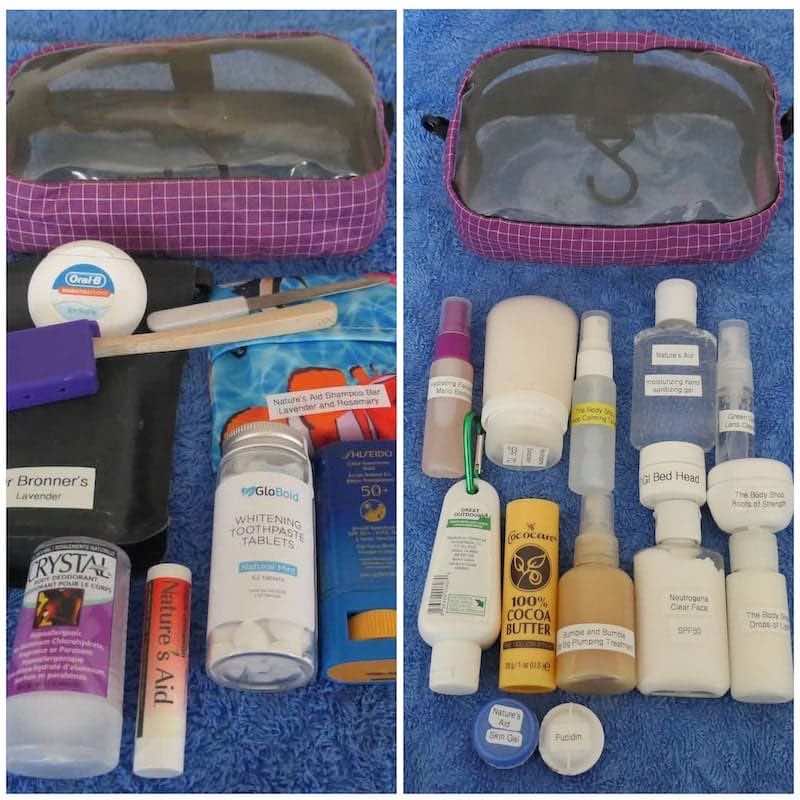
Here are some other tips:
- Look for products where a little goes a long way. I’m always willing to try something new when the directions suggest using a pea-sized amount, or it’s possible to lather up a storm with, for example, a flimsy soap leaf.
- Decanting is better on your purse and the environment than purchasing products in travel-sized containers. However, if you find a container that meets your needs, retain it for decanting purposes.
- Decant just enough, and use a range of refillable containers of different sizes and functions. Experiment at home so you have an idea of what ‘just enough’ means given the length of your trip.
- Use double-duty products. Dr. Bronner’s Magic Soap can be used as body wash, shampoo, facial cleanser, or laundry soap.
- Use solid substitutes if there’s not enough space in your 3-1-1 bag for all the liquids, gels, aerosols, creams. and pastes you want to pack.
- Reduce your plastic waste, and pack toothpaste tablets. My favourite is GloBoid Toothpaste Tablets with Fluoride. One tablet foams just like toothpaste and my teeth feel clean after brushing.
- Visit your local health food store for healthier alternatives to products containing chemicals. That’s where I discovered crystal deodorant. It’s effective, doesn’t leave residue on clothing and lasts for months. Look for travel sizes such as Crystal Body Deodorant (30g).
- Don’t forget to include a packet of soap leaves for public toilets without soap, and a small travel-sized bottle of sanitizer.
- Buy it there. I prefer to pack what I need, but there have been occasions when buying sunscreen at my destination made sense, and carrying an empty container for decanting purposes. I bought sunscreen when cycling in New Zealand and decanted what was left into an empty container before flying to Australia. I like the GoToob travel tube with a handy loop lock for attaching to a bag or bike.
11. Plan to do laundry
Clothes you aren’t wearing are the clothes you have to schlepp around from place to place. If they’re dirty, they’re useless. Dead weight. An essential key to packing light is to bring fewer clothes and have a plan to keep them clean. Self-serve laundromat? Hotel laundry service? Drop-off and pick-up laundry service? Hand-wash in a sink or shower? Choose what works for you and pack accordingly.
In the event it’s useful, here’s what works for me:
- With the exception of outerwear, if it can’t be washed, or needs to be ironed, it stays at home.
- Paying a little extra for a combination of merino and synthetics means not having to wash after one wear.
- Travel pants and leggings in darker, neutral colours can be worn day after day without washing.
- Hand washing takes a few minutes each evening, and for lightweight and quick-dry fabrics, they’re good to go the next day.
- Pack a travel clothesline, one that is lightweight and doesn’t require clothespins. Hooks at both ends are more serviceable than suction cups. They loop back into the braid, expanding your options for setting up the line. My favourite is the Go Travel Pegless Washing Line, with the suction cups left at home.
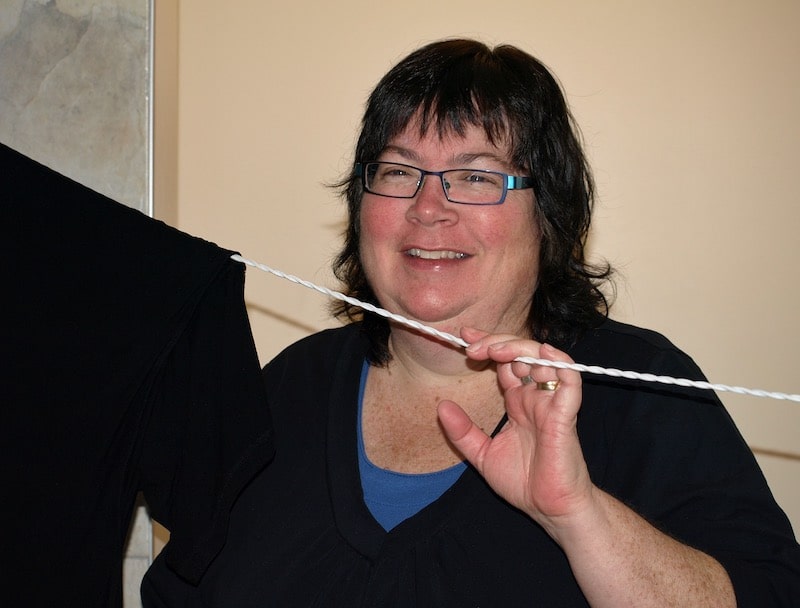
12. Identify your clothing principles
Develop a set of principles to guide your clothing choices. Here are some examples.
(i) Love everything you pack
A limited wardrobe means wearing items over and over, and feeling comfortable and confident doing so. Choosing clothing and shoes can be a challenging part of packing. Assembling a ‘travel wardrobe’ and setting it aside for travel makes the task easier. This means not buying new clothes for a trip but relying on favourite tried-and-true pieces.
(ii) Build a compact capsule wardrobe
A capsule wardrobe is a small collection of clothing in coordinating colours where items easily mix and match. It includes tops, bottoms, dresses, outerwear, and shoes. When curating a capsule wardrobe, select a clothing colour palette comprising colours that are right for you. Incorporate a couple of neutrals, and two or three main colours with complementary accent shades. Avoid white and lighter colours that show scuffs and stains. Aim to mix and match every top with every bottom, and every base and mid-layer. Each dress needs to blend with other pieces such as a warm layer and leggings. Accessorizing with scarves and jewellery helps dress up and extend a capsule wardrobe. One of the best articles I’ve found on how to build a travel capsule wardrobe is at Lady Light Travel. For additional inspiration and examples, take a look at the Capsule Wardrobe Pinterest Board.
(iii) Skip the slogans
Slogans and brand names draw attention, and scream ‘tourist.’ They can be distracting in photographs, especially when the same item of clothing appears in several pictures. In a capsule wardrobe, they limit the ability of pieces to intermix. They also dress down an outfit. For example, I have a very comfortable and versatile pair of Sherpa Naulo black cargo pants that in a pinch could be dressed up with a decent top and accessories, except for the large and prominent ‘Sherpa’ label on the left thigh. Oh, how I love those pants except for that label. And it’s reflective for Pete’s sake!!
(iv) Choose fabrics wisely
For many travellers, this means odour-resistant, wrinkle-resistant, lightweight yet durable, breathable, quick drying, and takes up as little space as possible. I tried performance fabrics found in active wear, but they came up short on the odour-resistant feature. I now lean towards a merino blend, and paying more for quality.
(v) Merino is your friend
I love this fabric.
- It’s cool in warm weather and warm in cool weather.
- It’s soft and doesn’t itch like other woollen garments.
- It’s lightweight, and doesn’t demand a lot of space.
- It’s perfect for layering up and down. When the temperature drops, wear an extra layer. When it warms up during the day, remove a layer and stuff it into a day bag.
- Merino’s odour-resistant properties are legendary. I can pound the pavement for days in the same pair of merino socks so there’s never a need to pack more than two pairs. The same holds true for base layer shirts that can be worn several times without washing.
The downside is that it’s pricey. Sign up for Icebreaker newsletters and those of your favourite outdoor stores to stay updated on their sales. Also, check out what’s available at Costco. I’ve found Cloudveil 100% merino tops in the $20 range.
If I hadn’t tried AllBirds Wool Runners, I would never have believed how comfortable merino shoes can be. They’re lightweight, breathable, washable, and sustainable. They’re my closed-toe shoe of choice for most trips. I love them!
(vi) Identify clothing numbers and stick to them
This simple system keeps me on track. My numbers, stacked in a somewhat vertical order, are 2, 3, 5, 5, 3, 2. For most trips, it means 2 pairs of socks, 3 bottoms, 5 panties, 5 tops, 3 pieces of head/neck gear, and 2 bras. Add one or two pieces of outerwear depending on the season, one swimsuit, one dress, and one or two mid-layers (reduce the 5 tops to 4 or 3) and I’m good to go for most trips.
Here’s the challenging part. After trying on each top with each bottom and eight tops are likely candidates, they need to be reduced to four or five pieces. Remaining committed to clothing numbers means making tough choices but it has to be done!
Having numbers helps maximize the use of each piece that’s packed. If each of the five tops can be worn with each of the three bottoms, there’s more than enough variety in the 15 possible outfits.
(vii) Plan to layer up and down
Dressing in layers translates into having clothes that allow you to cope easily with fluctuations in temperature, or when crossing climates and seasons. Thin base and mid-layers are more functional than a bulky sweater or sweatshirt. They dry faster, and take up less space. In fact, three merino base layers, one Patagonia Capilene Midweight Zip, and one merino full zip mid-layer takes up the same amount of space as one of my woollen sweaters.
For winter and cold weather travel, look for a packable puffy down jacket that stuffs into its own pocket. With insulating layers underneath, and a waterproof, windproof shell on top, it doesn’t need to do the heavy lifting required of a dedicated winter jacket. My Arc’teryx Thorium AR Hoody and Arc’teryx Norvan SL Hoody both pack into their own pouches. Weighing 402 grams and 126 grams respectively, the combined weight of 528 grams / 18.6 ounces makes for lightweight protection from wet and cold conditions. Separately or together, they’re more versatile than a heavy winter jacket.
(viii) Use accessories
Accessories such as scarves, neck gaiters, and jewellery take up minimal space, spice up an outfit, and help create different looks. A Buff tubular neck gaiter or head sock is a versatile piece of kit performing a multitude of functions.
13. Limit shoes
Shoes are weight and space guzzlers. Stick to a two-pair or three-pair limit. When weighing your options, choose those that best transition from day wear to smart-casual evening wear and outside to inside. If possible, steer clear of brightly coloured athletic shoes. Find something that looks at home at the gym, on the trail, or in a fancy restaurant.
For the health of your feet and your shoes, pack at least two pairs for longer trips. Alternating shoes keeps feet limber, and shoes need adequate time to air and dry out. For travel in warmer weather, choose a good pair of walking sandals and a versatile pair of closed-toe walking shoes in a neutral colour. If you haven’t yet found your perfect pair of walking sandals, check out the Teva Tirra. They have the added advantage of coping well around water.
Flip-flops are useful for reasons already mentioned, but keep in mind that wearing them for long periods isn’t good for your feet. They offer no support, and make stubbed toes, cuts, and sprained ankles more likely. They can also contribute to bunions, hammertoe, heel spurs, and plantar fasciitis.
14. One week = one month = one year
Whether packing for a week, a month, or a year, the packed weight of your bag should be similar for all trips. Your clothing inventory will reflect some slight variation by piece, and your shoes may vary according to weather and destination, but the number of items should be somewhat constant. Your basic first-aid kit, comfort pack of self-care essentials, and MacGyver fix-it kit will be much the same. Your electronics might have an extra adapter or two for additional countries. Your toiletries may reflect some variations of what ‘just enough’ looks like, but with the exception of sunscreen and insect repellent, they too will be similar for most trips.
For longer trips across different climates, you’ll still dress in layers, but perhaps rent or purchase what you need for short periods in very cold conditions. Thrift shops can be a great resource. As you enter or leave a country or climate, there will be opportunities to purchase, donate, or sell items from or to other travellers. If staying in hostels, check out the buy-and-sell section on the bulletin board.
Depending at what point in your trip you need specialized gear, another option might be to mail things home when it’s no longer needed. Assess the feasibility of this strategy by checking the weight, postage rates, and availability of an appropriate mailing box before leaving home. For example, I paid 60 AUD (44 USD) to mail a postage box of stuff from Australia to Canada. It comprised gear packed for cycling and lower temperatures in New Zealand. When I arrived in Australia, it was clear the gear was no longer needed, and the extra 2 kg (4.4 lb) was more than I wanted to carry. Replacing it back in Canada would have cost way more than what it cost to mail it home.
15. Find your packing style
(i) Roll, fold, bundle, or stuff
Figure out what works best for you and what you’re packing. ‘Bundling’ makes for a tight compact package if you’re unpacking everything at your destination. Stuffing works for a packable down jacket, or maybe socks and underwear.
I quite like rolling. There are fewer creases, and when stored in a packing cube, it’s easy to get a quick fix on how many clean pieces remain. I follow the techniques described by Von Malegowski (How to Pack Clothes for Traveling) and Elektra King (How to fold underwear quick and easy).
(ii) Use packing organizers to compress and stay organized
Packing organizers keep things clean, protected, and organized. They compartmentalize a bag, much like a filing system. Things are easy to find and easy to put back after use. No more rummaging through a cavernous expanse looking for what you need. They compress clothing so a bag looks smaller. This is handy when travelling on a budget carrier with a 7-kg (15-lb) maximum carry-on allowance, as your bag is less likely to attract attention.
For carrying layers I’m not wearing, I love the Eagle Creek Pack-It Spectre Compression Cubes. They compress outerwear beautifully, especially when travelling in winter.
(iii) Pack for balance and accessibility
A backpack needs to be as comfortable as possible. This means packing the heaviest items as close to the body’s centre of gravity as possible — in the centre of a bag, and close to the body. Packing organizers allow you to densely pack both your heaviest and lightest items around each other, and keep them in place with the internal compression straps. What needs to be accessible at security checkpoints, during the journey, or as soon as you arrive? Pack these items (e.g., 3-1-1 bag, water bottle, umbrella, outerwear) in an external pocket or personal item.
(iv) Wear your stuff
Wearing your heaviest and bulkiest gear on travel days (if possible) might mean the difference between going carry-on and needing to check a bag. If your outerwear includes a travel vest or jacket loaded with pockets, you can wear a lot of stuff. What you wear doesn’t count against your baggage allowance.
On occasions, I travel with a SCOTTeVEST travel vest. It weighs about 400 g / 14 oz. It carries an iPad mini, iPhone, wallet, passport sleeve, Panasonic Lumix DC-ZS200 pocket camera, Bose QC 20 noise-cancelling in-ear headphones, eye glasses, energy bar, and pen for a total weight of 3.3 kg / 7 lb 4 oz. Similarly, my Clothing Arts Cubed Travel Jacket with its eight pockets can be packed with these same items. A packable travel purse worn under a travel vest or jacket increases the options for wearing more stuff.
16. Evaluate gadgets
Taking a digital detox is impractical for today’s travellers. The electronic revolution is transforming the way we travel and internet-enabled devices offer convenience and security. They’re not only useful for what we can take, but just as handy for what can be left behind. But how do you choose which ones to take? Here are a few ideas:
- Make each one earn its place. How will it enrich your travel experience? If you decide to pack a phone or tablet, load it with apps, music, movies, books, podcasts… whatever will be useful, allow you to stay connected with family and friends, and make your travels more informed and enjoyable. Read up on what bloggers and tech sites are saying about useful travel apps.
- How might it encumber you? Might a more compact version meet your needs? Replacing a DSLR camera with a pocket-sized Panasonic LUMIX DC-ZS200 was one of the best packing-light decisions I’ve made. Its portability far outweighs the benefits of a DSLR camera.
- Unless you’re doing any serious work while away, evaluate the need for a laptop. I LOVE my MacBook Air and would undoubtedly use it while travelling. However, the extra weight and keeping it secure aren’t worth it. My iPhone and iPad mini serve most of my needs while away.
- Is keeping it secure worth the effort? A smaller, more compact version is easier to keep tabs on. An iPad mini, compared to an iPad, is small enough, and light enough, to be slipped into a zippered internal pocket of a purse or outerwear.
- Reduce the number of charging blocks by using a charger with several USB ports for charging multiple devices off the same outlet. Instead of a universal adapter, use a kit consisting of different adapters and just take the one(s) you need.
- Choose the smallest possible power bank for your needs. My TG90 10,000 mAh charger with three built-in charging cords fits easily in a pocket or purse, and weighs 210 g / 7.4 oz. Fully charged, it has enough juice to get me through the longest of travel days, and then some.
- Consider packing a USB to AC international travel charger with interlocking adapters and USB-A and USB-C charging ports. You’ll need just one AC outlet and have the ability to charge several devices at the same time. An added bonus is that you can leave the separate charging bricks of each device at home. My Lencent 45W charger ticks all the features needed in a USB to AC charger.
- I found over-the-head headphones to be heavy, and take up more space than the in-ear variety. If you’re like me, you’ll use in-ear headphones more often. Spend a little extra for the noise-reducing feature. There are lots on the market, both wired and Bluetooth. I adore my BOSE QuietComfort 20.
17. Pack with your safety and security in mind
Staying safe and keeping your stuff secure can weigh heavily on your mind. Enter the concept of ‘travelling light,’ the mental and emotional dimensions of travel. It’s concerned with leaving home and familiar surroundings and worrying less about what was left behind or undone. It means having fewer qualms about not having the tools to deal with an emergency. It involves thinking about possible mishaps and what needs to be packed or put in place to deal with scenarios such as seeking emergency medical treatment or dealing with a stolen passport.
A few digital downloads on your devices and adding some lightweight items to your packing list can be worth their weight in gold in an emergency. Here are some of my staples.
- A personal security alarm makes a loud noise when activated. Attach it to a purse or day bag so it’s within easy reach.
- A whistle is easily attached to a purse or sternum strap.
- Laminated cards are durable and pack well. Carry a copy of the information page of your passport, the emergency medical insurance wallet card, spread emergency contact cards throughout your luggage.
- Carry a small high-powered flashlight, and use the flashlight app on your phone as a backup.
- My wrist ID bracelet blends well with any outfit and contains a mine of useful information for first responders.
- If you don’t have a bag loaded with built-in security features, make your own bag more difficult for pickpockets to penetrate. Insert a few internal attachment points to attach tethering straps attached to more valuable items. Pack a few lightweight cables to secure external zipper pulls on bags.
- Incorporate ‘travel gear hacks’ into your clothing and gear. For example, add a small credit-card-sized pocket to the inside of a waistband, and hide an emergency cash stash in unlikely containers.
- Carry a lock that’s versatile enough for a range of applications. I use a triple cable lock. It fits all the hostel lockers I’ve encountered, and it anchors the interlocking zippers of the two compartments of my bag. A vinyl-coated cable is handy for attaching my bag to a luggage rack or belt loop, handy when snoozing on a train or while stuck in an airport.
- Place useful information on the lock screen of your phone. I use the app from RoadID. It contains my name and ICE (In Case of Emergency) contact person and phone number.
- Use a passcode lock on your devices.
- Enable the ‘find-your-device’ feature on your gadgets.
- Use bag trackers. Leave one at your accommodation or in a vehicle to help find your way back.
- Label your valuables. Consider purchasing stickers and tags from an online lost-and-found service.
-
-
- 25 Ideas on how to prepare an emergency preparedness toolkit for travellers
- Six reasons to carry laminated copies of your passport
- How to make a traveller’s emergency contact card in five easy steps
- Emergency ID bracelet for travellers
- Lost and found recovery services for travellers
- Tips on protection from pickpockets
- Stop pickpockets with this comprehensive assortment of anti-pickpocket gear
- My favourite travel gear hacks
-
18. Go paperless
I’ve travelled with people packing reams of paper… booking confirmations, language basics, pages of research on activities… OMGoodness, I’ve been that person. Guidebooks, language guides, maps, magazines, novels, address books, emergency contact information, a journal (and more) are weight and space guzzlers. In most cases, they can be replaced with digital versions. Reducing paper gathered along the way can be accomplished by scanning receipts and other printed material with a scanner app such as Scanner Pro. Before packing paper, evaluate whether or not it can be replaced with a digital version.
19. Be inventive
Travelling teaches us to be resourceful. Packing can be more satisfying when alternate or multiple uses are found for things that at first blush seem one-dimensional. Something might be designed for a specific purpose, but repurposed into something different. For example, a depleted gift card or hotel room key forms a sturdy core for duct tape, or a wrapping channel for earbuds. These and other travel gear hacks are easy on the wallet, and are functional alternatives to commercial products.
Or, design your own travel aids and accessories.
20. Pack as early as possible
Most of us don’t plan a trip at the last minute. We book in advance and develop detailed itineraries. Take the same approach to what and how you pack.
- Packing as far in advance as possible is the companion piece to list making. It gives you the space for the mental work that comes naturally while doing other things. Keep your various lists handy for amending when an idea strikes.
- Designate one or more places for storing your ‘travel stuff.’ When you can quickly put your hands on your passport, currency from previous trips, packing organizers, travel clothing, 3-1-1 bag for toiletries and cosmetics, first-aid kit, and various packing aids, it makes packing less onerous.
- Consider accumulating duplicate items such as decanted toiletries, in-ear headphones, and charging cords to be more ravel ready. I’ve since moved from a second toiletries kit because it’s too easy to travel with expired toiletries with this strategy.
- Break it up. Pack in segments (e.g., toiletries in one sitting, first-aid kit at another) when you’ve the time and patience to evaluate each item.
- Choose a ‘packing station’ such as a spare bed or corner of the basement. Spread out what you’re thinking of packing, organized in categories. Over several sittings, evaluate each item; remove, replace, and remove some more.
- Consider developing a capsule wardrobe of items reserved for travel. Clothes are my most challenging part of packing and having a ‘travel wardrobe’ takes the angst out of this aspect of packing. Try on every piece of clothing with others, including shoes and accessories. Assess each and every outfit. Remove those pieces that don’t combine well with several others.
- Ask for advice, preferably of someone who will help you justify each item and edit some more.
- Weigh your bag. Walk with it — around the house, the block, or the neighbourhood. If you’re going carry-on, simulate lifting your standard carry-on bag up to the height of an overhead compartment. If you can’t do it, you’ll need to edit some more or check your bag. Helping passengers with luggage is not part of a flight attendant’s job. A heavy bag is a liability. According to Nora Dunn, The Professional Hobo, “The weight of your luggage is equally proportionate to the level of misery you’ll experience while travelling.”
Conclusion
I’ll leave the final words to a couple of experts.
According to Fred Perrotta of Tortuga Backpacks, “Packing light is about more than just saving money. Packing light minimizes your physical and mental burden. Trade stuff for convenience, flexibility, and fun. Real travel is about your experiences, not your gear.”
Rick Steves, travel author and host, advises “Go casual, simple, and very light. Remember, in your travels, you’ll meet two kinds of tourists — those who pack light and those who wish they had. Say it out loud: ‘PACK LIGHT PACK LIGHT PACK LIGHT’.”
If you’re interested in more ideas and resources on packing light, sign up for my newsletter to be notified of new and updated content. You’ll find the sign-up box in the right-hand sidebar on a laptop or scroll down further on a phone or tablet. Your email address will never be shared, and you can unsubscribe at any time.
If you found this post helpful, please share it by selecting one or more social media buttons. Also, what are your top tips for packing light? Please share your thoughts in the comments. Thank you.
Pin for later?
Some of the links on this page are affiliate links. If you use them to buy something, you don’t pay more, but this website earns a small commission, which helps pay the costs of running the site. Thank you for your support.

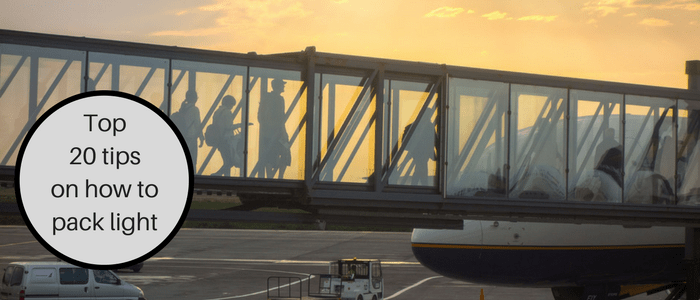
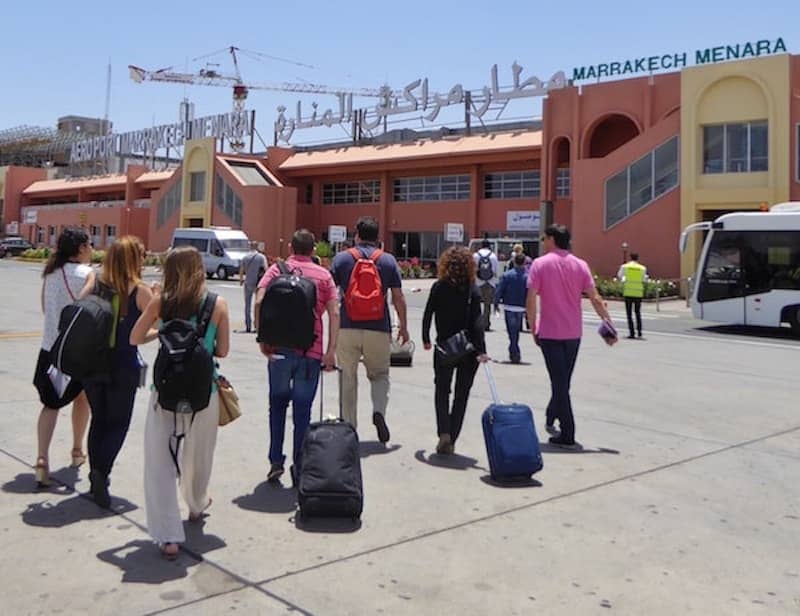


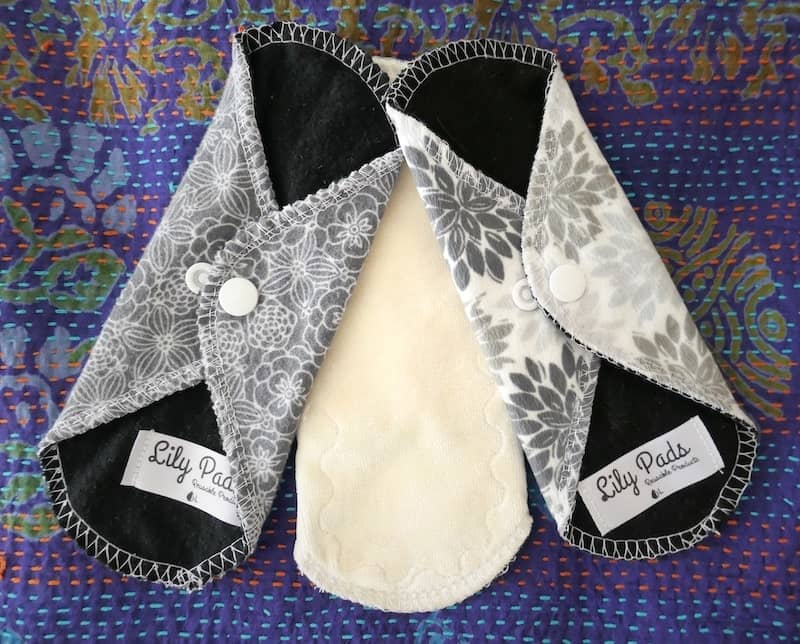
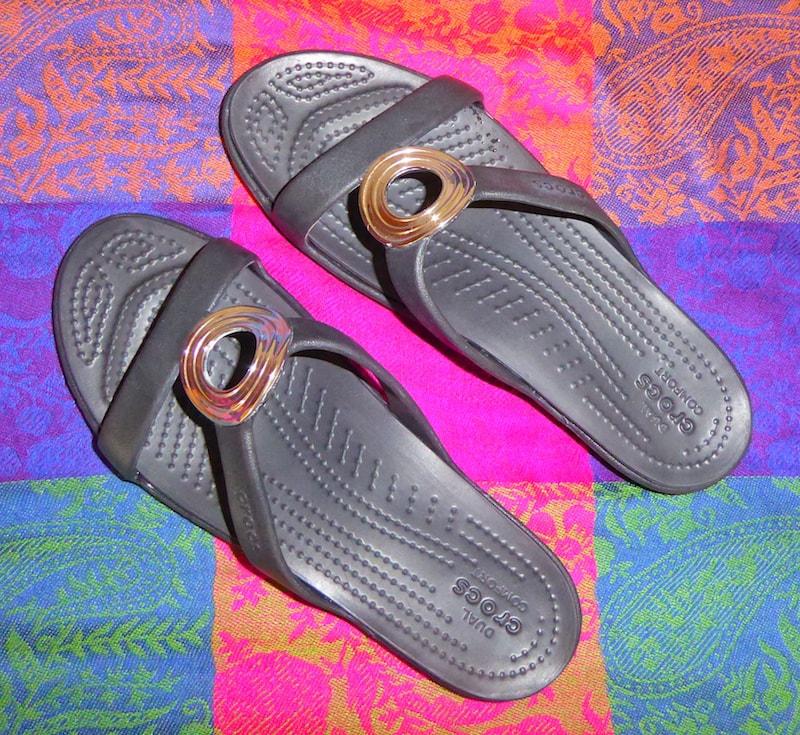
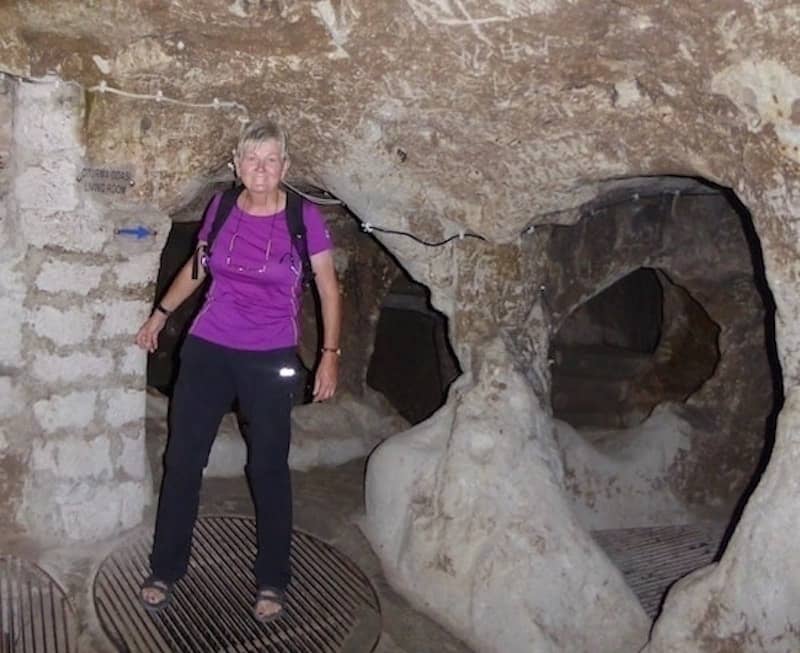
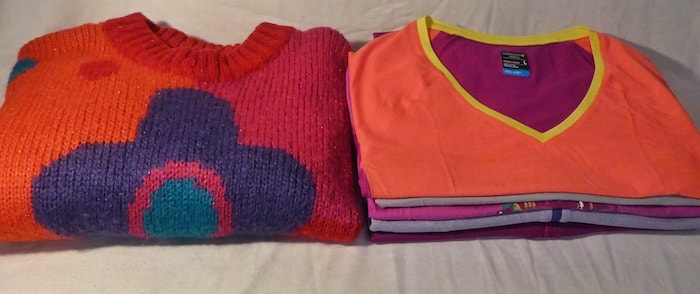
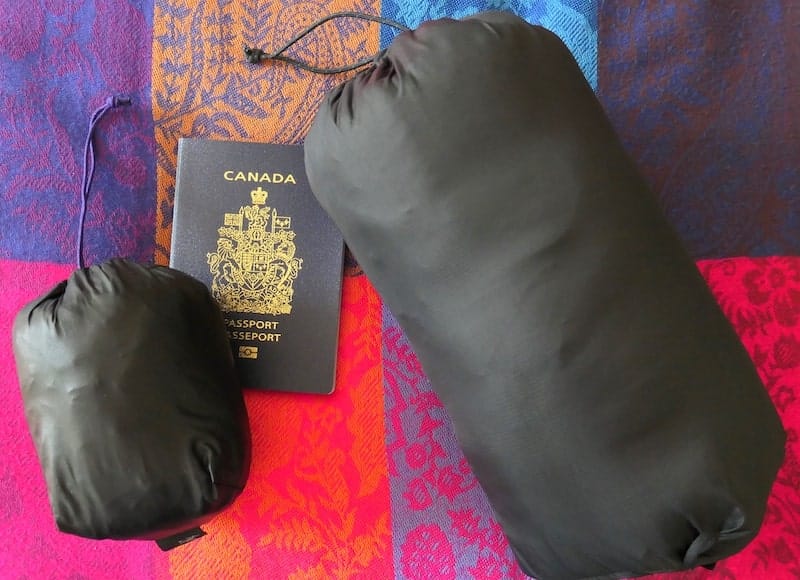
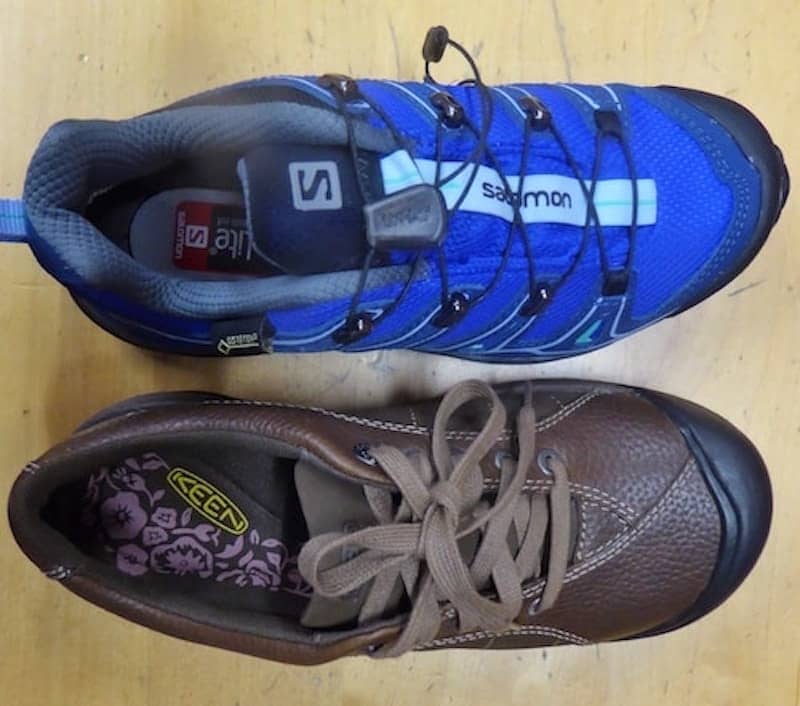
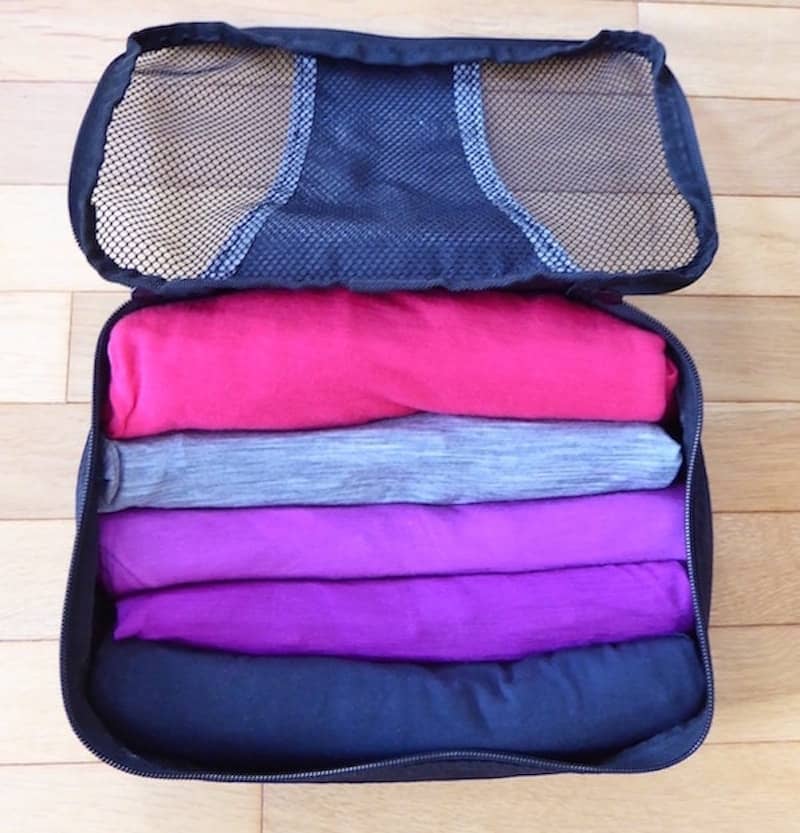
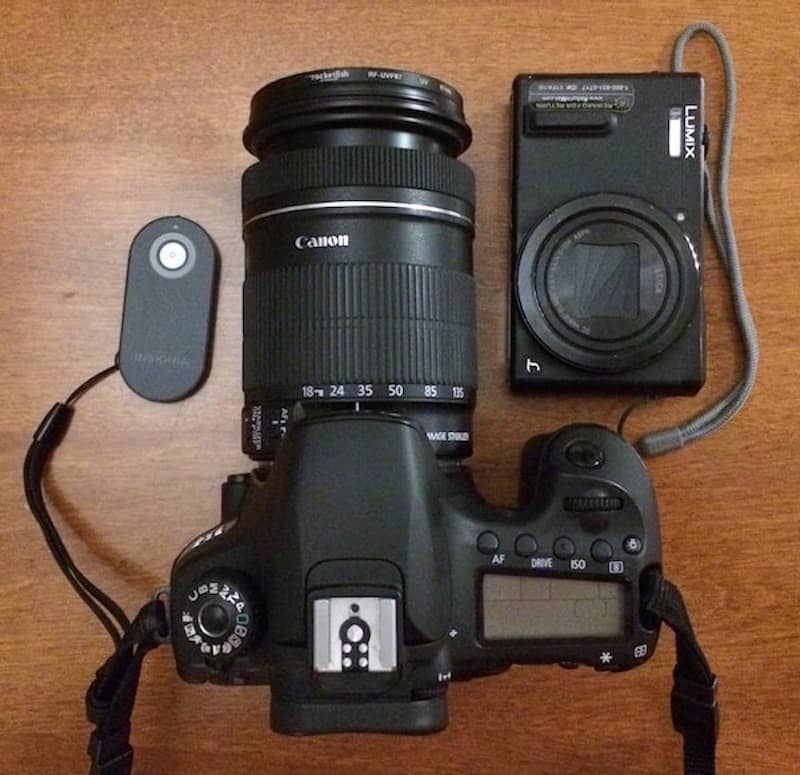
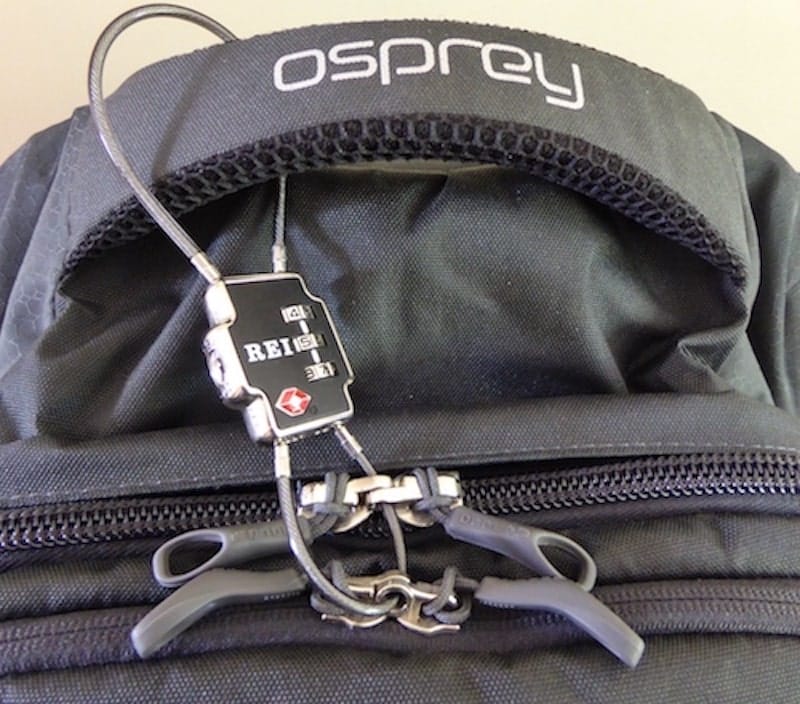
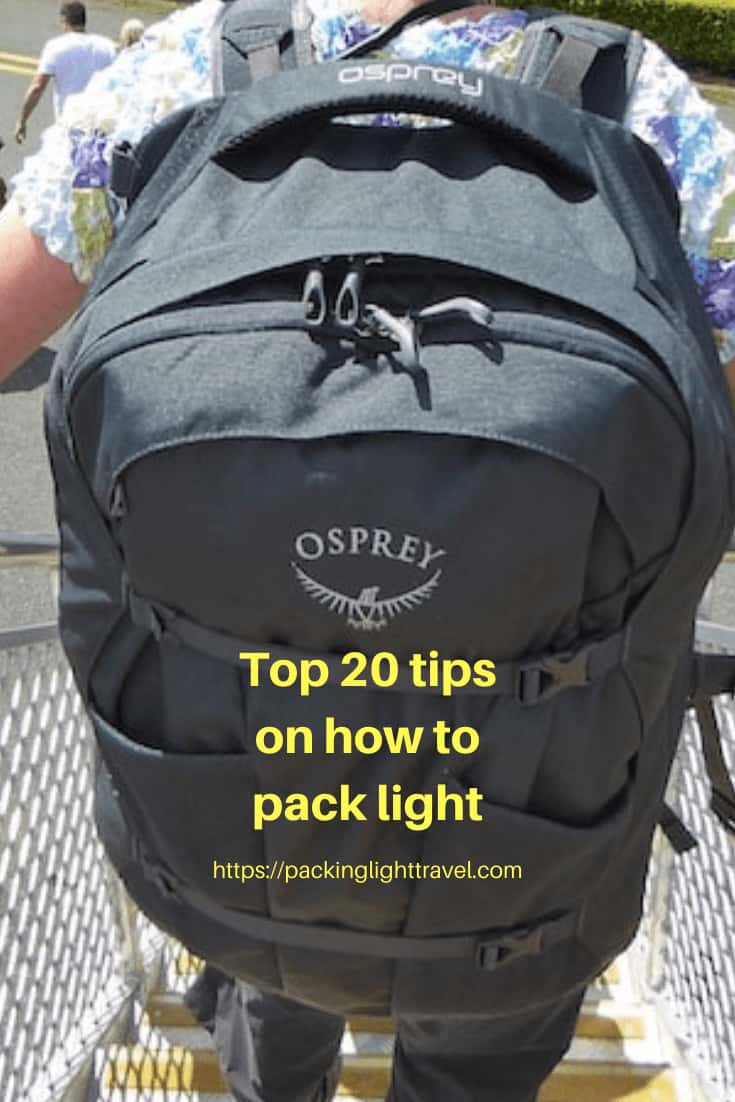




I always try to pack light and your tips are so useful! Keep up the great work, Anne!
A ton of information. This article will help me to ease my next trip. Thank you Anne Betts for your nice presentation.
Always travel light! But don’t forget the necessities. Thanks for sharing this wonderful advice with us.
Tristan Chua recently posted…7 Tips for Healthy Looking “Feeters”
I’ve debated getting a rolling suitcase for a long time. I’ve never justified spending the money when I have 2 perfectly functional backpacks, but a roller sure would be easier in places with good sidewalks! And hey, if I win then it’s free so no money spent!
So much great info! I’m going to use this for a 5 day trip to Taiwan this month. Planning to look good, be eco-friendly, and travel light thanks to your advice. 🙂
I LOVED the tips about purchasing items that you’ll use more than just one time because of an impulse buy! I was in Scotland this year and it started to rain (as it always does) and I bought a compactable umbrella instead of a plastic poncho! This was so informative and helpful!
We have the same love affair with Merino! I love the tip about packing in advance. You are completely correct that I plan in advance and then pack the night before. What am I doing?! Of course I should pack/plan in advance! Thank you.
Packing for travel has always been a struggle for us. Packing as early as possible is helpful so we can make adjustments and avoid impulsive items.
Even as a seasoned traveler, I still get packing anxiety. So these are great tips and reminders on how to pack light!
Okay… I’ve got the electronics down to a minimum… Why can’t I do the same thing with the clothes and shoes??? The Capsule Wardrobe is a great concept. The shoes are always a challenge. Thanks for the motivational article. I feel challenged to do better!
Barbara recently posted…This Vacation Budget Hack Might Change How You Travel Forever
We are always looking to improve our packing weight. By following your tips, we were able to shed 20 pounds of overall travel weight on our latest trip. Thank you.
This is music to my ears, Bryson. I’m pleased some of my tips worked for you. All the best on your packing light journey.
Anne Betts recently posted…Visit Titanic Belfast where the legendary Titanic was designed and built
Ah I definitely need to practice these tips! I’m very guilty of overpacking or ‘just in case’ packing! I love the idea of packing multi-purpose items so you can cover several eventualities with just a few items! I’m definitely going to try out these tips on my next trip! I’d love to pack lighter! I’ll let you know how it goes – thanks for the tips!
I am packing for my trip tomorrow and this is exactly what I needed, such a great list 🙂 Thanks for sharing your tips and tricks!
Packing light is something I’ve become very good at recently – I even stuff my coat sleeves with clothes and carrying it through with me! You’ve mentioned some great tips in here that will definitely help a lot of over-packers!
I like that you start this recognizing that not one size fits all for packing! I read all the tips and I still find myself packing too much. We learned about taking the local geography into account when we had to roll suitcases up and down stairs over bridges in Venice! We are big list makers so that helps to make sure we don’t forget things! But sadly there are too many “just in case”things on that list. What a comprehensive set of things to consider.
There is so much to learn on packing even for a seasoned traveler. There is always new ways of packing. I think once you create a routine it will get easier. These are great suggestions.
I try to pack as light as possible for the 3 of us. I’m getting better at it every time. It also helps that our son is 11 now and needs less and less extra stuff. Great tips! We use a few of them ourselves.
I love your tips and will incorporate many! While I always strive to pack light, I am usually a failure at it. The many toiletries and shoes torpedo my plan. I will explore some of the “liquidless” toiletries you recommended. Thanks
Thanks for these fabulous tips! Although I’m usually a light packer, I find a always need 4 pairs of shoes! I’m rethinking a bag I just packed based on your tips!
Some very valid points here ! I am a light traveller who learnt the hard way (although I was never carrying huge suitcases anyway!). The no.11 (regarding laundry) is EXTREMELY truthful, dirty clothes are dead weight! Thanks for putting all these together!
I really need to work on packing light. Usually I pack more clothes than what I need then only wearing the same few outfits over and over. Such great tips and will try to apply them on my next trip.
You pointed at very important things to consider while traveling. Like laundry.. I think this is key part of any trip and planning ahead is the best! I usually only travel with my laundry sheets. I loved that you wrote about this not only about how to fold but how to take of the environment while traveling comfortable <3
Great tips! It took so much time for me to stop trying to cram everything inside my suitcase. Sometimes I still fight the urge :)) The thing that helps me the most to pack less is the fact that I started to actually plan what to wear during each day of my trip.
Andoreia recently posted…Kotor and Perast day trip from Dubrovnik
This is the most comprehensive article I’ve read on this topic! There is a lot out there but you have covered it so clearly. Thank you!!